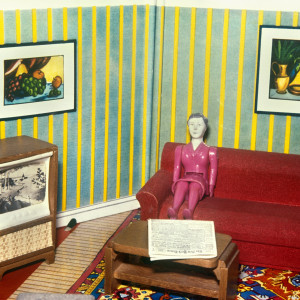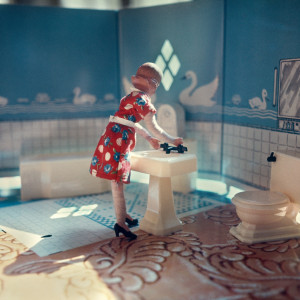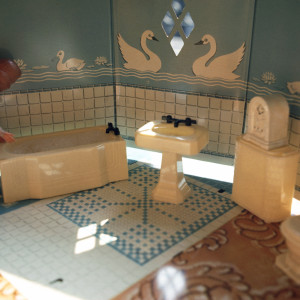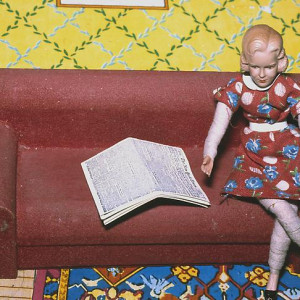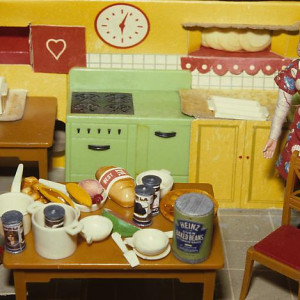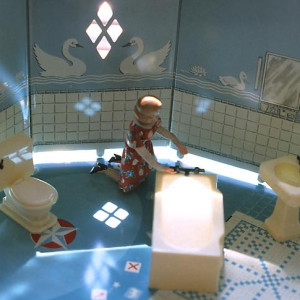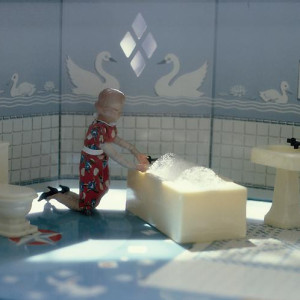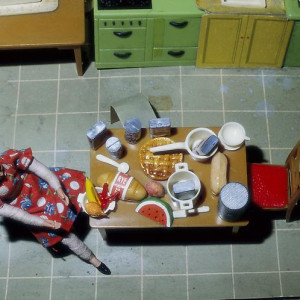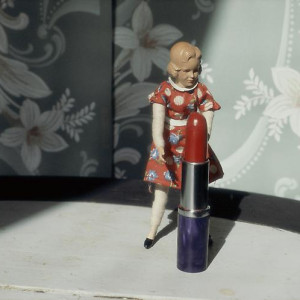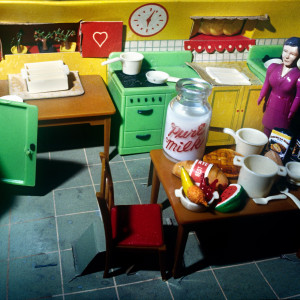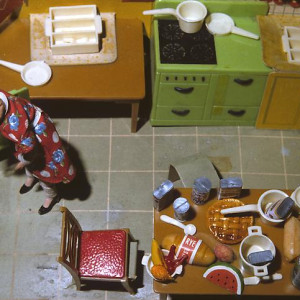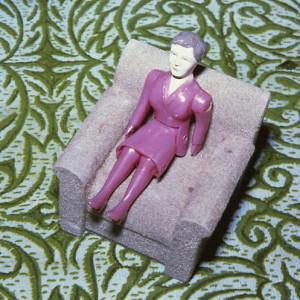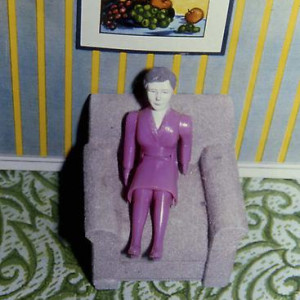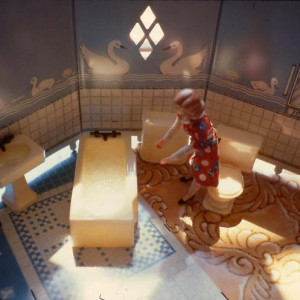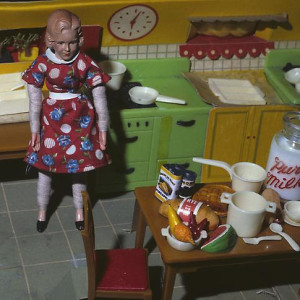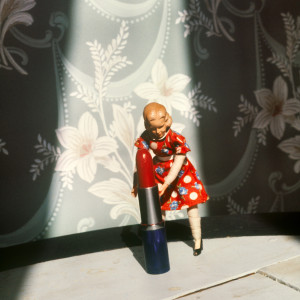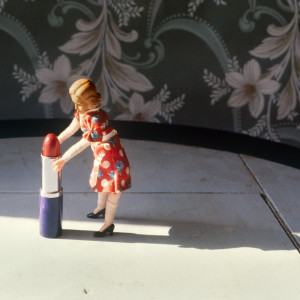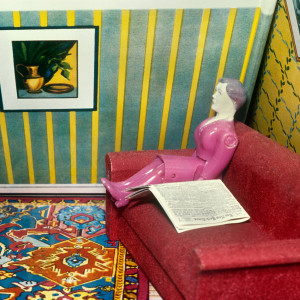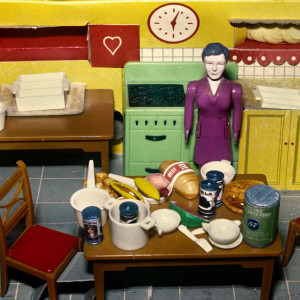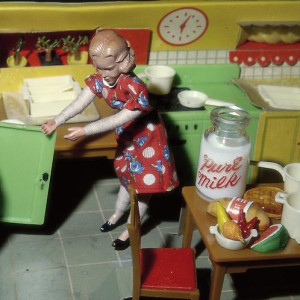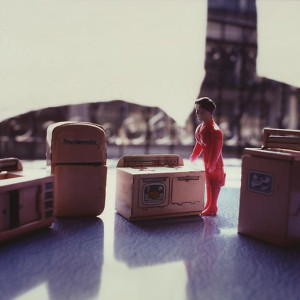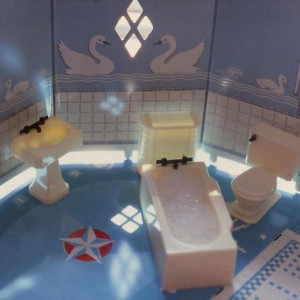Early Color Interiors, 1978–79
As she continued composing interiors, Simmons realized she was shooting in black-and-white but “seeing in color.” She began to use color film to create the series Early Color Interiors, 1978–79, and then stayed with it exclusively for about a year and a half. Finding it liberating, color was, for her, like turning the lights on, and it separated her from the historically rigorous, academic nature of black-and-white photography that she sought to avoid.
Jane and a blonde doll became the two protagonists for the Early Color Interiors, which includes a sequence with each doll titled Pushing Lipstick. Though she had combined real objects and miniature props in her earlier series, the Pushing Lipstick images mark the first time Simmons used a human-scaled object—the red lipstick—in an image with a figurine. The off-kilter scale makes the doll only a quarter-size larger than her accessory, so the lipstick, while seductive, is an obvious burden. The absurdity of the plight in Pushing Lipstick is magnified by the crude stage and the spotlight on the doll and her lipstick dance partner, which is presumably and unexpectedly male, indicated by the red, phallic shape that emerges from the typically feminine accessory. That the phallic/feminine lipstick dance partner is too heavy for the doll to push or drag around is also a strong feminist statement, signaling the trappings of being female and all that that implies. As in her earlier works, visual information is reduced to three elements: a doll, lipstick, and a spot-lit stage; and the shifts in scale are strong contributors to the economy of information provided in conveying meaning.
